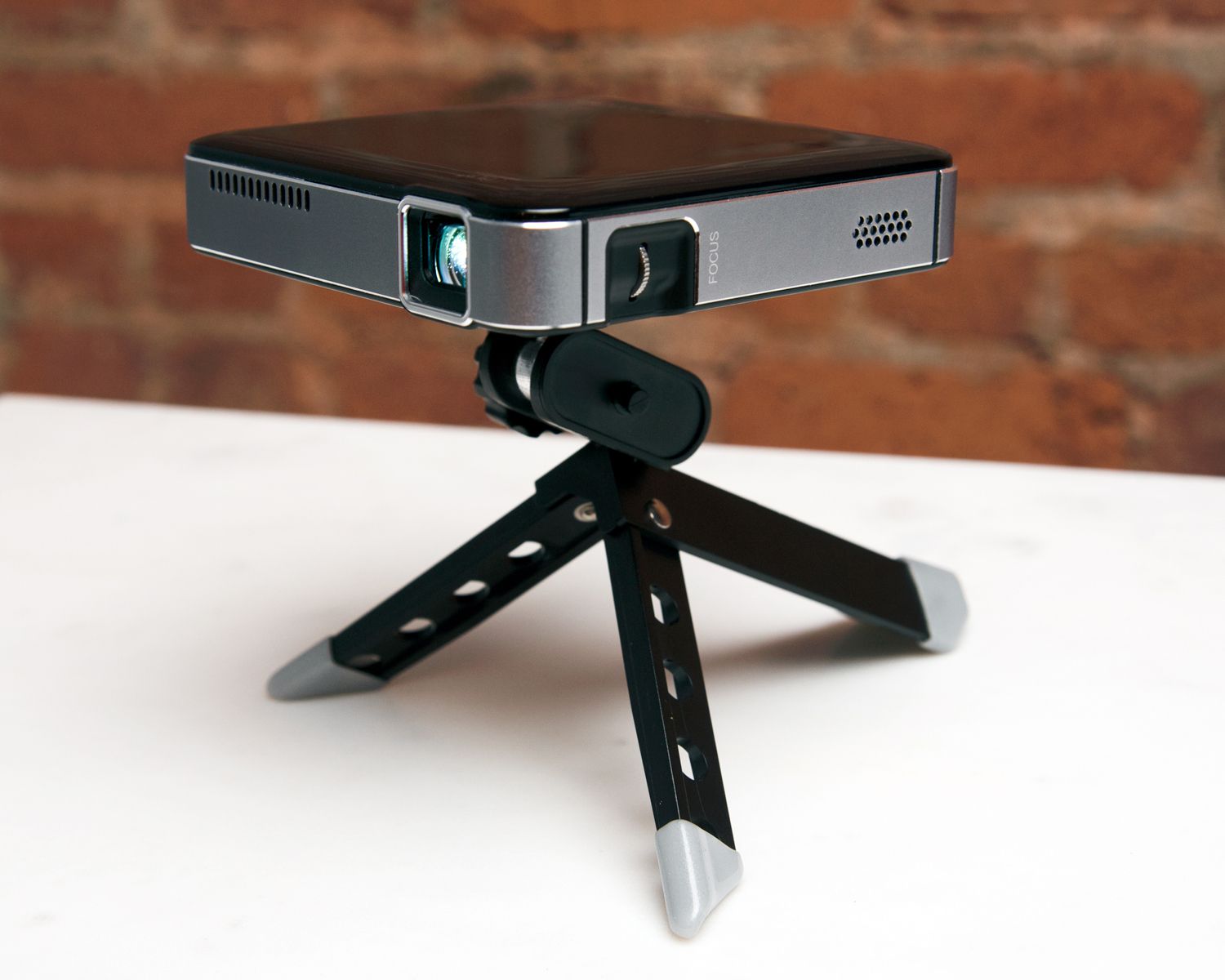Pico projectors were previously unknown to the general public. Despite this, it is now one of the most common types of projectors.
What is a Pico projector? Images of large, heavy equipment and many connections come to mind when one thinks of projectors. Of course, this isn’t always the case. Pico projectors can occasionally match or even outperform full-size projectors in quality.
Pico projectors are exactly what they sound like: small projectors. They’re tiny projectors that may be hooked to a mobile device or used independently.
Because of the shrinking of all gadgets, these devices, also known as pocket projectors, mobile projectors, or portable projectors, were produced.
This article contains all of the information you need to know about the Pico projector.

What Is a Pico Projector?
Pico projectors are small, lightweight projectors that you can tote around. Because it is smaller and lighter than standard projectors, it is appropriately referred to as a “mini projector.” Because it is battery-powered, you can use it even if you don’t have an electrical outlet.
Pico projectors make it easier to watch and project content from your laptop or mobile device. The best portable projector allows you to play video files from SD or USB storage. This type of projector is trendy because of its versatility.
Standard projectors are larger and more expensive, as you’ve probably guessed. As a result, their weight takes up more room and is more likely to remain in place due to their weight. On the other hand, you can carry a pico projector around in your pocket.
Pico projector work
Liquid crystal displays and digital light processing projectors make up most of the market. However, the Pico projector enters the picture to up the ante. LED and DLP, two leading technologies, are used in this low-cost mini projector.
Pico projectors use a combination of color wheels and mirrors to create an image that is projected through a light bulb. In contrast to conventional projectors, Pico’s liquid crystal display generates the image first. An LED light source will be used to project the image.
Pico projectors’ lower cost is due to the LED technologies they employ. However, this projector model is also less bright because it uses less power. Because of these advancements, a low-cost projector with plenty of functionality is now possible. Pico projectors, on the other hand, are much more than that.
Advantages of Pico Projector
There are some advantages to using a projector like the Pico. To determine if this projector is right for you, you need to know what they are. Decide if a Pico projector is right for you by reading through the pros below.
Super portable
Pico projectors, as previously mentioned, are compact and light. It’s portable, so you can project whatever’s on your phone, laptop, or even a USB flash drive.
Inexpensive
Because pico projectors are so small, they are significantly less expensive than traditional projectors. Check out customer reviews before purchasing to ensure you’re getting what you pay for.
Many connection options
As was previously stated, you can connect the Pico projector in various ways. There will be no problem with it being used as a video projector.
Things You Should Consider While Buying a Pico Projector
A Pico projector has three primary considerations to keep in mind. These include brightness, resolution, and portability. You’ll want to consider these factors when deciding on a Pico projector.
Brightness
For example, Pico projectors have a limited temperature and brightness range. They can produce only between 200 and 300 lumens of real brightness.
Although many products claim to be between 2000 and 3000, you cannot test them if you buy them online because they are advertised.
So, keep this in mind: don’t be fooled, and be realistic about your hopes and objectives.
Size
Because they’re so small, pico projectors are extremely portable. When more features are added, however, the size and weight of the projectors increase. Larger models may be too heavy for some people, but most won’t mind the extra inch.
Sound
A few options are available if you want to use sound in presentations. Some newer-generation pico projectors have integrated small speakers into the device, which provides audio support.
Projectors with built-in speakers are more portable, but the size, battery life, and performance are all compromised.
Image quality
Projector image quality is determined by the projector’s imaging components, light source, and other optical components. Because of this, Pico projectors can keep their costs down by using low-cost display panels and simplified optical mechanisms.
Consequently, the image appears to be hazy around the edges because of the uneven lighting. You have no choice but to accept pico projectors as a fact of life.
Portability
The portability of Pico projectors is a major selling point. However, the image quality can suffer as a result of this. We are using smartphone LCDs as the primary imaging component causing this problem.
A great deal of tinkering is required with LCD technology to get a complete image to appear on the LCD screen.
The DMDs used in DLP Pico projectors are significantly larger than those in the larger DLP models. All of these factors contribute to the improved portability of DLP Pico projectors.
Read More: What Kind Of Projectors Do Movie Theaters Use?

How Long Do Pico Projectors Last
Many of the older models could still be in use today. However, based on their parts, we can make some educated guesses about how long these devices will last.
The typical lifespan of general-purpose projectors used in schools and theaters is three to five years. Many projectors have a much longer lifespan when used in the home. Projector lamps can quickly degrade depending on the model and light source.
As a general rule of thumb, projector bulbs can last anywhere from 1,500 to 20,000 hours, depending on how bright the bulb is.
Other features of pico projectors include LCD screens, wireless and Bluetooth modules, battery packs, and other components. Lithium-ion batteries typically have 500 to 1500 charge cycles, but how long they last depend on how often they’ve been used and the conditions under which they’re being charged.
Avoid charging your mini projector in scorching environments. Maintain the projector’s lens and air vents by keeping it clean and dry indoors. Using a portable projector outside in dusty or humid conditions can also increase wear and tear on projectors.
Related: What to Look For in a Projector?
Conclusion
This is the end. We have provided you with helpful information about the question: what is a Pico Projector?! Now, you can consider buying.
The Pico projector can project an image onto any surface using the light it emits. Pico projectors use mirrors and red, green, and blue lasers to create high-quality images.
A Pico projector is a great answer when you need a larger screen but don’t want to buy a TV or carry a laptop. We’ve covered all there is to know about Pico projectors.
So, go ahead and take advantage of this technology. This technology has been a popular choice among consumers due to its portability.